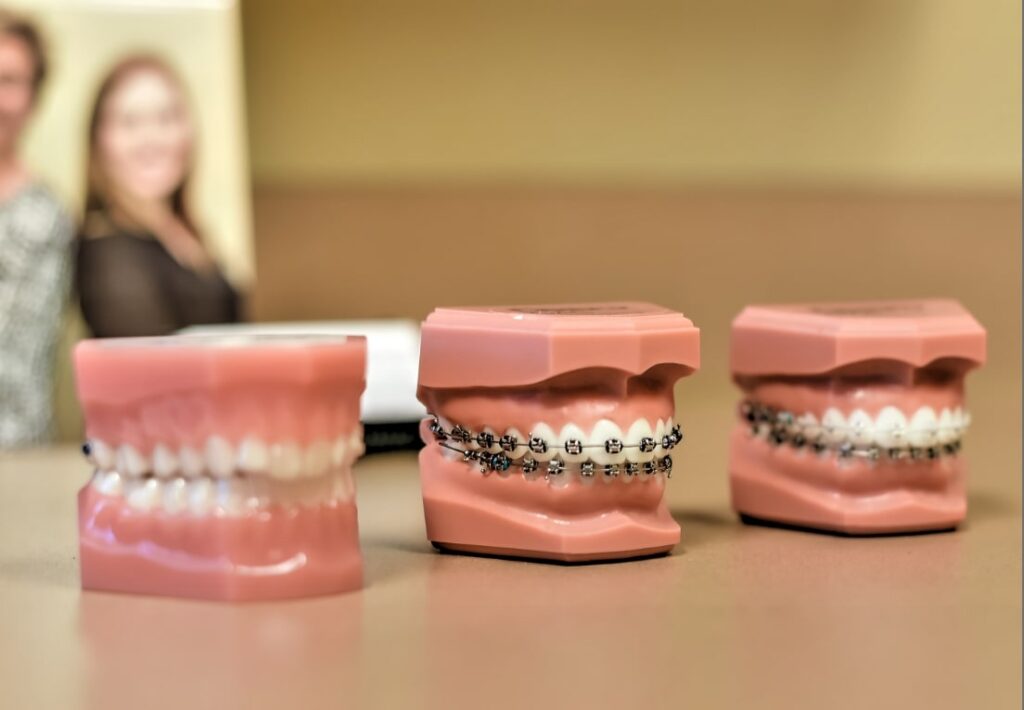Comprehensive Overview to Orthodontics Treatments for Fixing Dental Misalignments
In the world of orthodontics, the trip to accomplishing a flawlessly straightened smile entails a myriad of procedures tailored to deal with oral misalignments. From conventional dental braces to unseen aligners and also surgical alternatives, the area of orthodontics provides a variety of remedies to attend to varying levels of oral irregularities. Understanding the details of each treatment, including their systems, advantages, and possible drawbacks, is essential in making educated choices about one's orthodontic therapy. As we navigate through the thorough guide to orthodontic treatments for remedying dental imbalances, the complex details of each method will certainly unravel, losing light on the course toward a unified and functional oral alignment.
Orthodontic Procedures Introduction

Regular adjustments and tracking are essential parts of orthodontic treatment to ensure development is on track and to make any kind of necessary alterations along the means. By going through orthodontic procedures, patients can not just accomplish a straighter grin yet additionally enhance their overall dental health and feature.
Conventional Dental Braces: Exactly How They Work
When thinking about orthodontic therapies for oral imbalances, traditional dental braces stand out as a reliable approach for correcting teeth positioning. Traditional dental braces are composed of braces, cables, and bands that function with each other to apply continuous pressure on the teeth, gradually relocating them right into the wanted alignment.
One secret aspect of exactly how traditional dental braces job is the process of bone improvement. As stress is put on the teeth through the dental braces, the bone bordering the teeth is improved to support the new tooth positions. This remodeling is crucial for the lasting stability of the corrected placement. Individuals will require routine modifications at the orthodontist's workplace to make sure the braces remain to apply the correct stress for effective teeth movement.
Invisible Aligners: Cons and pros
Unseen aligners provide a very discreet and practical choice to conventional dental braces for fixing oral misalignments. These clear, tailor-made trays are practically unseen when used, making them an enticing option for people looking for a more cosmetically pleasing orthodontic treatment. One of the main advantages of undetectable aligners is their removability, enabling much easier upkeep of oral hygiene contrasted to traditional braces. Individuals can get rid of the aligners before consuming or brushing their teeth, minimizing the threat of food getting stuck in the device and streamlining the cleaning process.

Surgical Orthodontic Options
Surgical interventions in orthodontics existing feasible options for resolving complicated dental imbalances that may not be effectively settled with conventional orthodontic therapies. While conventional dental braces and undetectable aligners can correct lots of orthodontic issues, specific cases need surgical treatment to attain ideal results. Surgical orthodontic choices are typically suggested for severe malocclusions, considerable jaw inconsistencies, and cases where the underlying bone framework requires adjustment to achieve proper placement.
One common medical orthodontic treatment is orthognathic surgical treatment, which entails repositioning the jaws to remedy functional concerns such as difficulty chewing or talking. This surgical procedure is frequently done in useful link cooperation with an orthodontist that helps align the teeth before and after the treatment. Surgical orthodontics might also include treatments to reveal impacted teeth, eliminate excess periodontal cells, or improve the jawbone to create an extra harmonious facial profile.
Prior to taking into consideration medical orthodontic alternatives, people undergo a comprehensive assessment to identify the requirement and prospective benefits of such interventions. braces. While surgery may appear overwhelming, it can significantly improve both the function and visual appeals of the smile in situations where conventional orthodontic treatments fall short
Retainers and Post-Treatment Treatment

Post-treatment treatment includes following the orthodontist's blog instructions faithfully. This might include proper dental hygiene practices, participating in follow-up visits, and using the retainers as prescribed. Failing to conform with post-treatment care guidelines can lead to relapse, where the teeth progressively return towards their initial positions. Regular retainer wear, great oral health, and routine oral examinations are important for maintaining the outcomes achieved via orthodontic surgical treatment and ensuring the long-lasting stability of the dealt with dental placement.
Conclusion
Finally, more information orthodontic procedures provide numerous options for dealing with dental misalignments. Typical braces utilize metal brackets and cables to change teeth right into correct alignment. Undetectable aligners provide a more discreet choice yet may not be ideal for all cases. Surgical orthodontic options are offered for a lot more extreme misalignments. Retainers are typically made use of post-treatment to keep the brand-new placement. In general, orthodontic procedures can effectively enhance oral health and aesthetic appearance.
As we browse with the detailed guide to orthodontic procedures for fixing dental misalignments, the intricate details of each approach will certainly unravel, dropping light on the path toward a harmonious and functional oral positioning. - orthodontist
One of the most common orthodontic treatments is the use of dental braces, which consist of metal braces and wires that use gentle stress to gradually move teeth into the desired placement.When taking into consideration orthodontic therapies for dental imbalances, typical braces stand out as a time-tested approach for remedying teeth positioning. Additionally, unseen aligners might not be suitable for intricate orthodontic problems that require even more considerable teeth movement, as they are typically suggested for mild to modest situations. Retainers are custom-made orthodontic tools created to hold teeth in their fixed placements after the conclusion of orthodontic treatment.